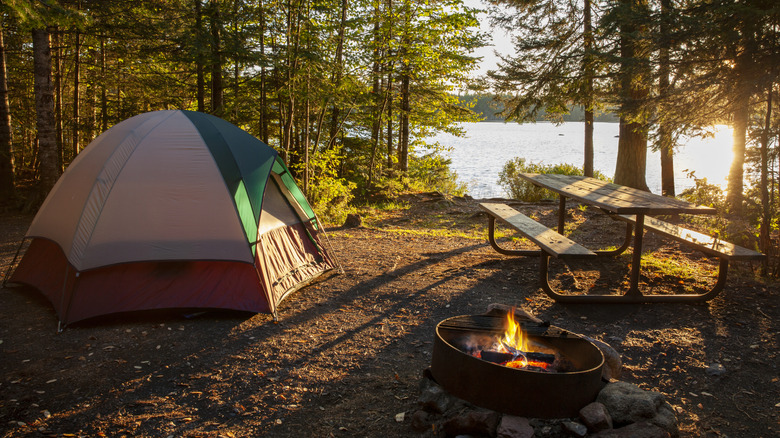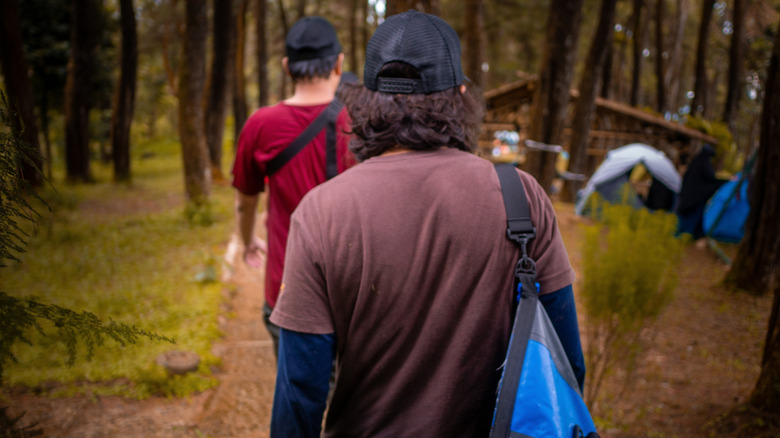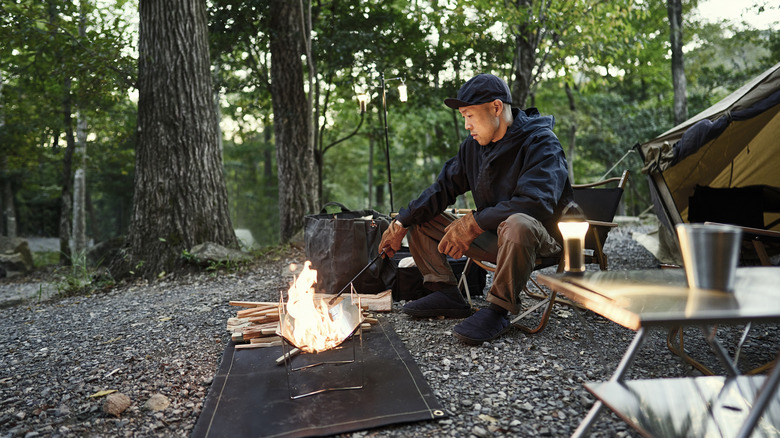This Too Often Made Campsite Mistake Could Leave You Without A Spot (Or Hauling Gear For Miles)
Imagine you've been driving all day to a campground you've never visited before. You can't wait to arrive at your weekend wilderness retreat and take in the peace and beauty of the great outdoors. You've got all the gear you need for a camping adventure and are looking forward to a weekend of nature activities. Finally, you arrive at your destination and pull into the campground ... only to find that your campsite requires hiking in — and carrying all your gear.
Sound familiar? You're not alone. If you've made this camping mistake before, take comfort in knowing that you're just one of many. This too often made campsite mistake can lead to unpleasant surprises, but can be easily avoided with a little clarity.
The difference between "walk-in" and "walk-up" campsites can be confusing, especially because they sound so similar. Many folks mix up the two or believe they mean the same thing, assuming that both types of campsites mean no reservations are required. Knowing the difference, however, can help avoid a potential major camping mishap.
The difference between walk-in and walk-up campsites
Walk-in campsites are designated spots where campers are required to carry their gear to the site on foot, typically a relatively short distance from where they park. This has nothing to do with reservation status, meaning that some walk-in sites may still require campground reservations in advance and are not "first come, first served." Some walk-in sites only require walking a few hundred feet, making it easy to haul everything you'll need for a quick and easy camping retreat, but some require walking a few hundred yards or more. Campsites that are walk-in are often more private and secluded than traditional drive-up sites, but be sure to read campsite descriptions carefully to know what to expect.
Walk-up campsites, on the other hand, are sites that are first-come, first-served and are available without advanced reservations. Campers must be physically present to claim a space, unlike walk-in sites that can be either reserved or claimed in order of arrival. The term "walk-up" simply means you arrive without a reservation, but doesn't necessarily require walking to your campsite.
In short, walk-in campsites refer to sites that campers have to carry their gear to from a designated parking area, whether reserved or not. Walk-up campsites refer to spots that aren't reserved, whether they require walking in or not.
Tips for successfully securing a campsite
Securing a campsite in the warm weather months can be a challenge, particularly in popular outdoorsy destinations like a spacious campground in the heart of Yellowstone National Park or amazing campsites in New York that allow you to escape the hustle and bustle. There are ways, however, to make sure that you get the most out of your camping adventures and to ensure that you have a place to rest your head at night.
Setting up alerts from popular camping platforms like Hipcamp and CampNab can help you get last-minute notifications for available campsites. These are great for getting a reservation at campgrounds that are typically crowded or harder to book. Consider setting up alerts for more than one campground in the area you want to explore to increase your chances of getting a spot. Sites tend to disappear quickly, so when you get a notification, act fast!
You can improve your odds of snagging a sweet campsite by including alternative parks and campgrounds in your search. Visiting a popular national park? Look for nearby state parks or public land campgrounds instead of relying solely on National Park Service-run camping facilities. It's a good idea to consider booking camping accommodations outside of peak visiting times. For example, shoulder seasons, like late spring and early fall, are more accessible times to book. Lastly, pay attention to the reservation windows for your desired campsites. Many facilities, including some of the best national parks for camping in America, operate on a rolling booking system. This means they accept reservations only within a certain timeframe of the booking date, usually 6 months to 1 year in advance.


